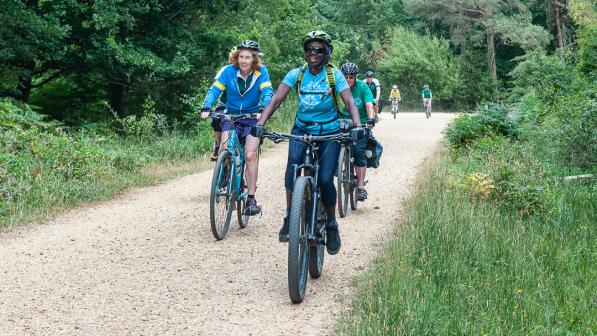Knowhow: Can I do a longer cycle tour with Type 1 diabetes?

While cycle touring presents challenges for the management of Type 1 diabetes (T1D), it is no longer the blocker it once was. After 25 years with T1D and numerous weekend tours under my belt, I had always put off doing a longer tour due to concerns regarding my diabetes. But I recently cycled across Europe. What follows are my tips for T1D management and cycle touring.
Historically, T1D was managed using frequent blood tests and insulin injections via syringes. For cycle tourers, this resulted in frequent stops and having to carry copious amounts of medical equipment. Thankfully, recent changes to the availability and funding for technology to manage diabetes has now made cycle touring with T1D easier than ever.
Continuous glucose monitoring (CGM) systems are devices that monitor blood glucose in real time. Now freely available on the NHS to everyone with T1D in the UK, these have made an immeasurable difference to the health and quality of life of T1 diabetics.
With a little bit of tinkering with open-source software, most active diabetics now display their blood glucose on their smartwatches. Being able to check your blood glucose as easily as you can check your heart rate, without the need to stop and test, combined with more compact equipment, really opens up the possibilities to go further afield.
For those longer trips, there is still the logistical challenge of carrying the necessary medical equipment. An overly minimalist approach to packing can leave you in a tight spot, with not enough food or medication. The only real solutions are to coordinate deliveries along your route or to take larger panniers.
Despite the advances in technology, there is a lot to manage: balancing exercise intensity with insulin sensitivity; carbohydrate intake with energy expenditures; and having one pannier full of camping equipment and the other full of diabetes medication. Having people around you who understand the condition is invaluable.
Everyone has their own hurdles getting in the way of the epic cycle trip they’ve always dreamed of; T1D is just another challenge. With some careful planning, supportive friends and a little bit of confidence, there’s a route around it.
I’m not a medical professional so do consult your GP before undertaking your own long-distance trip with T1D. You can find more information from the NHS and the charity Breakthrough T1D.

Touring with Type 1 diabetes
- Use downloadable add-ins to display blood glucose on your smartwatch or bike computer. (It’s possible with all major brands).
- Consider using an insulin pump. It enables easy modifications to insulin dosing, based on activity levels and insulin sensitivity.
- On longer tours when it’s not possible to carry enough medication, ask Warmshowers hosts en route if you can arrange deliveries to them.
- After prolonged higher activity levels, your basal insulin requirements are lower. Incrementally lower your basal insulin using an insulin pump.
- Lightweight cooling products exist for keeping medication at the correct temperature – something to consider on long tours in warm climates.
Cycle magazine
Every two months Cycling UK members receive Cycle magazine, filled with interesting and informative articles, news and reviews for all cyclists.
Members can read the magazine in full online; non-members can read selected highlights.


